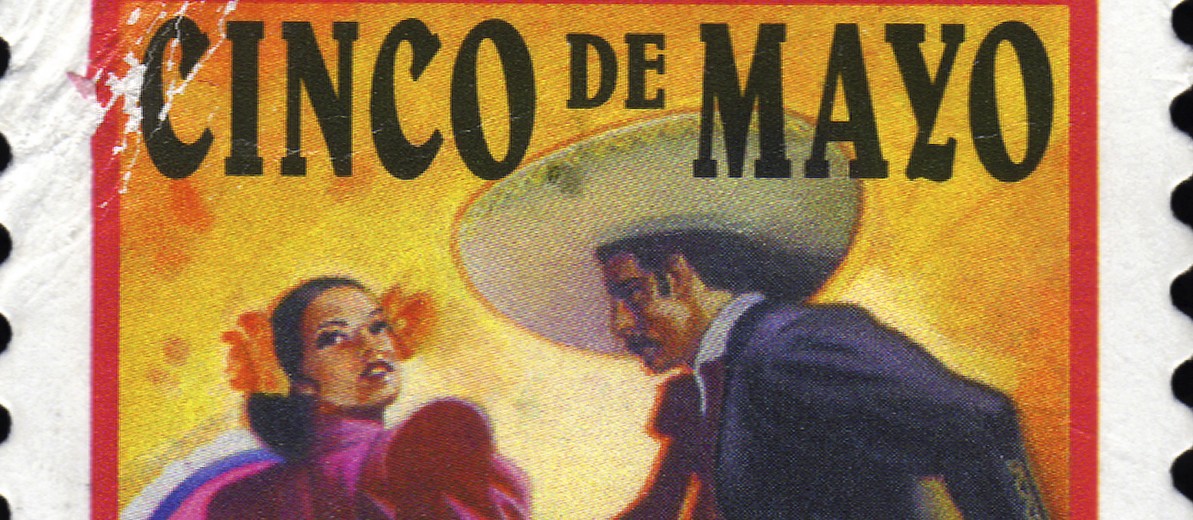While we all know how we celebrate Cinco de Mayo, many of us don’t know why we do. For those of us who like to observe the holiday well into the night with a few rounds of Bohemia or Dos Equis, it can appear as nothing more than a Latino’s St. Patrick’s Day – albeit with less green and better music. But this year, between shots of Patron and shouts of “¡Salud!” to your compadres, impress them with your knowledge of the day’s historical significance and cultural expressions across Mexico and the United States.
Contrary to popular belief, Cinco de Mayo is not Mexico’s Independence Day. That would be September 16, 1810, the day Mexicans finally sent the Spaniards packing. But the confusion is understandable. The fifth of May marks another defeat over foreign imperialist forces in Mexico. But if it wasn’t the Spanish getting whooped, then who was it?
Well, at some point in every great country’s history, it is bound by international law to defeat the French in battle. Cinco de Mayo was Mexico’s turn. With a few notable exceptions, it is the French who typically start the fight before going on to lose so badly. Such was the case in 1862, where our story begins.
At this time, France possessed the world’s most powerful military and a global network of colonies. It was eager to expand its reach into the Western hemisphere, but the United States considered this to be its sphere of influence and defended it forcefully. In 1861, however, Mexico defaulted on its European loans. With the United States preoccupied with its own civil war and unlikely to intervene in Latin America, the French used Mexico’s late payment as a pretext for invasion.
Initially, the French military seemed unstoppable. After storming Veracruz, they aimed their sights on Mexico City. But having just recently freed themselves from the yolk of Spanish oppression, only to lose much of their territory to the U.S. shortly thereafter, Mexicans were not impressed enough by crêpes and croissants to give up what remained of their once vast nation.
On May 5, 1862, roughly 8,000 French troops met resistance as they passed through the state of Puebla on their way to seize the capital. With great military tact, the heavily outnumbered and poorly equipped Mexican forces routed the invading army. When word of Mexico’s victory reached California, Latinos and anti-Confederate Caucasian-Americans celebrated it together as a triumph over imperialism. This first celebration of Cinco de Mayo helped foster a brief warming of relations between Mexican-Americans and Caucasians in the United States.
Within a year, however, the French had sent 30,000 more troops and successfully conquered Mexico. But only three years after that, Mexico defeated the French and reclaimed its sovereignty, with the aid of the U.S., who had emerged from the Civil War with a stronger military than ever before.
But all 19th century history aside, what may be most shocking of all about Cinco de Mayo – the one day of the year when everyone, even Arizona Governor Jan Brewer, wants to be Mexicano – is that it is hardly celebrated south of the border. Except for in the state of Puebla, where the victory occurred, and in a few larger Mexican cities, most of the hype surrounding the day is of U.S. origin. Since the first improvised celebration in California, Cinco de Mayo has entered mainstream consciousness here as Latino communities have increased their numbers and influence nationally.
Cali is still the place to be if you want roll in the holiday with a bang. Los Angeles’s annual Fiesta Broadway, dubbed “the largest Cinco de Mayo celebration in the world,” attracts a crowd of 500,000 to 12 square blocks of downtown L.A. and has played host to such legendary musicians as Tito Puente, Selena and Celia Cruz.
Meanwhile, in Puebla and Mexico City, crowds turn out to watch or participate in battle reenactments. Women wear colorful dresses, while men are decked out in historical military costumes and carry antique rifles. Those dressed as French soldiers often carry knapsacks with wine bottles poking out
Although the day is increasingly celebrated by heavy drinking in both countries, Cinco de Mayo has also long symbolized both national pride and the triumph of the people over foreign occupation. And while the celebrations may be more subdued in Mexico (or just plain hard to find at all), for many Cinco de Mayo has become a welcome opportunity to celebrate Latino culture.
Image credit- istockphoto.com/raclro

